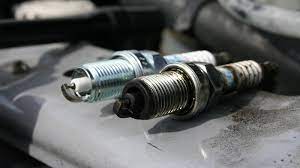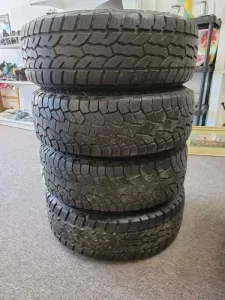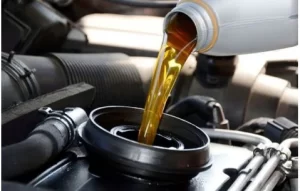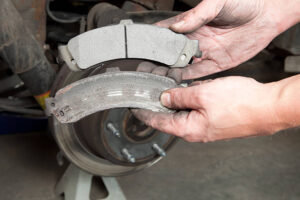
Cars play an important role in our daily lives. They transport us to work, school, and softball games. However, they also experience significant wear and tear. Cars, like all machines, require regular maintenance.
1. Take the time to take care of your car
You lead a busy life, and it can be hard to find time to take your car to the mechanic. When you do finally bring it in, you may be left without your car for a few hours or even longer, depending on the issue. But despite the inconvenience, it’s important to make time for automobile maintenance. Take control of your car’s health by consulting your car’s owner’s manual and making note of crucial maintenance milestones. And remember, not all regular upkeep requires the services of a pro—there are tasks you can take on that will help keep your car purring along.
2. Tires that are not rotated
Today’s automobile tires are pretty tough. They can last on average 50,000 miles before needing to be replaced. But if you don’t have them rotated every 5,000 to 8,000 miles, they may not last even half that long. Tires wear in a slightly different pattern depending on their position on the car, so regular rotation will ensure that they wear more evenly and last longer.
3. Not Changing Recommended Oil
Your car’s motor oil is responsible for lubricating the engine’s moving parts, but over time, the oil can become thick and dirty, causing the engine to overheat and leading to premature wear and tear on the engine’s components. Check your car’s manual for recommended oil change intervals, and stick to the schedule. The average is every 5,000 to 7,000 miles for regular motor oil and up to 15,000 miles for synthetic oil.
4. You can ignore brake problems
The owner’s manual will indicate how often your car’s brake pads should be replaced—typically every 50,000 miles. If you hear a grinding noise or feel a thud when you step on the brakes, however, have them checked out promptly, because the brake pads may be wearing down. If you ignore the problem, you could end up damaging the brake rotors, which are expensive to replace.
5. Use the wrong parts
If you do your own car maintenance, you’ll notice that there are dozens of brands of spark plugs, filters, and other off-brand components that are advertised as fitting your car’s make and model. These knockoffs may cost much less than the name-brand parts, but they don’t always perform as well and could shorten the life of your car. Always buy the parts recommended by your car’s manufacturer.
6. Not having wheels aligned
When a mechanic installs new tires, he aligns the wheels to ensure they all point straight ahead and are adjusted according to the manufacturer’s specifications. But if you hit a pothole or curb, a wheel can get knocked out of alignment. If you notice that your car is pulling to one side or that the steering wheel is crooked when your car is driving straight, you should have the alignment checked. When you drive a car with the wheels out of alignment, the tires will wear out more quickly, and the car will be more difficult to steer.
7. Avoid the car wash
Salt, chemicals, and mud will all dull automobile paint and can lead to premature rusting if they aren’t promptly removed. Regular visits to the car wash will go a long way toward protecting your car’s finish, and while you’re there, be sure to have the undercarriage sprayed, as that’s where mud and gunk are most likely to build up.
8. The Interior: Trashing
Not only is it important to keep the exterior of your car clean, but you also need to keep up with the interior. Sand, grit, and crumbs can wreak havoc on seats and floorboards. Vacuum regularly, remove stains promptly, and wipe away dirt, dust, and grime from the dashboard, doors, and console to help your car’s interior last longer.
9. Skippping Checkups
If you wait until a problem becomes obvious, your car may already have sustained extensive damage. The best way to protect your car is to schedule a professional checkup once a year. The mechanic will check all the car’s components, including the spark plugs, distributor cap, and valves, and let you know if any repairs are needed to keep your car running smoothly.
10. Ignoring Fluid Levels
The best way to make sure your car stays in good shape between annual checkups is to check fluid levels on a monthly basis and top them off as necessary. This is vital, as low fluid levels can lead to engine damage and other problems. Your car’s owner’s manual includes instructions on checking the motor oil, brake fluid, coolant, windshield washer fluid, and power steering fluid.
11. How to determine tire pressure
The average recommended tire pressure is between 30 and 35 pounds per square inch (psi), but don’t just guess—check! You’ll find the correct pressure for your car in the owner’s manual or printed on a sticker either inside the door jamb or on the inside of the fuel filler door. Incorrect tire pressure can lead to steering problems, shortened tire life, or tire failure, increasing the risk of an accident.
12. Ignoring Odd Noises
Rattles, bangs, and squeals are all signs that something is wrong with your car. If you hear odd noises while driving, have your car checked out by a mechanic ASAP. Remember, cars can’t heal themselves. The longer you wait, the more damage the problem could cause and the more expensive it could be to fix.
13. Avoid driving the car
Parking your car in the garage and taking a bus or bicycle is a good way to conserve gas, but don’t leave the car sitting too long. When cars sit for months, they can develop misshapen tires, their batteries can go bad, and—worst of all—rats and mice can set up residence under the hood, feasting on the car’s wiring until it’s destroyed. Even if you’re not using it regularly, start your car weekly, and drive it at least once a month.
Don’t Miss it!
You can hire a handyman to fix every problem in your home if you have the funds. These clever products can solve every problem around your house. Go now!
















